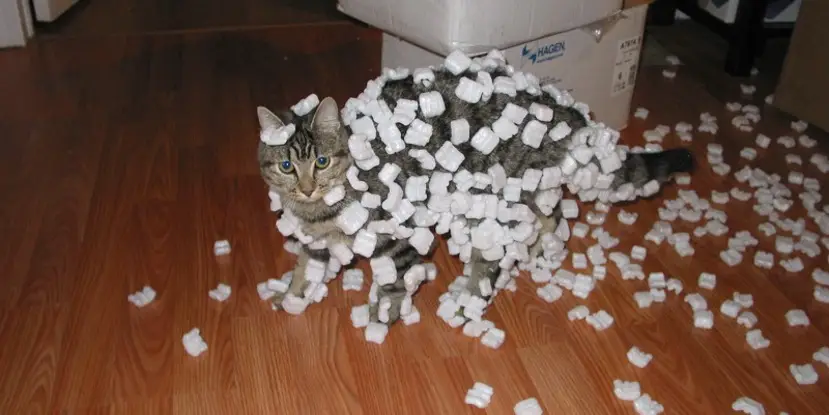When you order something online, it’s oftentimes delivered in a box. To keep your goodies from jostling around inside of that box, the packaging will often contain some sort of padded filler. One popular form of padded filler would be packing peanuts. These Styrofoam or starch peanuts take up a lot of room, tend to stick to just about everything, and are usually thrown away without a second thought. Researchers at Purdue University decided to give packing peanuts a second thought, and have re-purposed packing peanuts into something more useful – mobile battery components.
The second thought came after researchers were setting up their new lab. All of the equipment was packaged with thousands of packing peanuts, and the lab professor – Vilas Pol – suggested that the researchers try to do something productive rather than simply throw away the packing peanuts.
The researchers heated the packing peanuts in order to create carbon electrodes which can be used in Lithium-ion batteries. These electrodes are thinner than current electrodes, and increase charging speed significantly.
The new method “is a very simple, straightforward approach,” Pol said. “Typically, the peanuts are heated between 500 and 900 degrees Celsius in a furnace under inert atmosphere in the presence or absence of a transition metal salt catalyst.”
The resulting material is then processed into the anodes.
“The process is inexpensive, environmentally benign and potentially practical for large-scale manufacturing,” Etacheri said. “Microscopic and spectroscopic analyses proved the microstructures and morphologies responsible for superior electrochemical performances are preserved after many charge-discharge cycles.”
As of this time, the researchers have cycled their batteries 300 times before starting to see capacity loss. That’s absolutely a good start, but better performance will be needed before this technology will really be ready for prime time. All batteries degrade over time, but 300 cycles is just a little too low.
What do you think? Do you want packing peanut batteries in your next device? Let us know in the comments, or on Google+, Facebook, or Twitter.
[button link=”http://phys.org/news/2015-03-technology-peanuts-battery-components.html” icon=”fa-external-link” side=”left” target=”blank” color=”285b5e” textcolor=”ffffff”]Source: Phys.org[/button][button link=”http://www.engadget.com/2015/03/23/packing-peanuts-in-lithium-batteries/” icon=”fa-external-link” side=”left” target=”blank” color=”285b5e” textcolor=”ffffff”]Via: Engadget[/button]Last Updated on November 27, 2018.











Comments are closed.